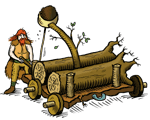Последние темы
Похожие темы
Праздники Исландии

Вход
South Iceland
Страница 1 из 1
 South Iceland
South Iceland
icelandreview.comThe South Iceland countryside stretches far and wide, is generally known for good weather, and contains many of Iceland's foremost natural treasures. The economy is prosperous and the culture full of variety. Many of the nation's best-known historical sites are in South Iceland, such as Þingvellir and Skálholt. Even though Iceland's greatest expanse of contiguous lowland lies in this region, magnificent mountains also provide the traveller with abundant opportunities for activities, relaxation and sightseeing in enchanting, untouched nature. South Icelanders will continue to give tourists the best possible service over the summer; on the other hand, we have in recent years emphasised that South Iceland is a nature paradise at all times, no matter what the season. For instance, spring clads the land in green, inviting people to come outside, travel and renew both body and soul. While some go hiking, swimming or golfing, others choose fishing or riding, or exploring the sea, rivers and lakes on various watercraft, or taking adventurous trips through the highlands and returning with long-lasting memories. Autumn brings fantastic colours to the South, and winter has its own beauty. Conditions in winter call for touring on snow scooters and specially-equipped 4WDs. Winter trips are offered onto the glaciers, where you can breathe in the pure, high-altitude air and enjoy the view in every direction.
Thingvellir: Thingvellir Plains has been the Iceland's most sacred place since AD 930, when the settler Grímur Goatshoe chose it as the site for the world's first parliament, the Icelandic Althingi (General Assembly). In July of each year delegates from all over Iceland would gather at Thingvellir, for two weeks, to pass laws and render judicial sentences. Iceland remained a sovereign nation-state, ruled solely by the people without a titular leader or central government until 1262 when it fell under the Norwegian King. Even after that the Althingi continued to meet at Thingvellir until 1798, when it was dissolved by Iceland's Danish rulers. In AD 1000, the Althingi decided that Icelanders should abandon the Norse religion and adopt Christianity. Despite the decision the old heathen gods continued to be privately worshiped to this very day.
Thingvellir National Park: National celebrations are often held in Thingvellir National Park at the northern end of Iceland's largest lake, Thingvallavatn. Thingvellir holds a special appeal for naturalists as it is the geologic meeting point of two continents. At Almannagjá Gorge, on the west side of the plains, is the easternmost edge of the American tectonic plate, otherwise submerged in the Atlantic Ocean and on the plain's east side, at the Heidargjá Gorge, is the westernmost edge of the Eurasian plate. In the 9,000 years since the Thingvellir lava field was formed, the tectonic plates have moved 231 ft apart. In addition, they are still moving at a rate of about half an inch per year.
Lögberg- Law Rock: At Thingvellir is a high rock wall where the person chosen as guardian of the Icelandic law would recite them every year from his memory. Öxarárfoss: Öxará Waterfall at Thingvellir is a beautiful, peaceful picnic spot. Drekkingarhylur (Pool of drowning): At Thingvellir just below the Öxará Waterfall, in a deep stretch of the river, lies the forbidding Drekkingarhylur pool, where unfaithful wives and witches were were drowned in the old days. Back then they had a special test to determine if a woman was witch or not. She would be put in to a sack and then thrown in to the river. If she would float it was a sign that she was a witch and she would be stoned to death. If she would sink to the bottom she was innocent, but then she would of course drown the poor thing (guess they weren`t to bright in them day?s, huh!).
Thingvallabær: Across the plain from Lögberg stand the church and the gabled manor house of Thingvellir, where the government of Iceland often hosts visiting heads of state.
Nikulásargjá Gorge: The gorge at Thingvellir, reached by a footbridge, is better known these days as Peningagjá (Money Gorge) because it is customary to fling a coin into the gorge's icy cold water and make a wish.
Lake Laugarvatn: Laugarvatn, or Warm Springs Lake, about 20 km (12 mi) east of Thingvellir, is warm enough for bathing. Its water is naturally heated by hot springs at the northern end of the lake. A cluster of buildings houses a school in winter and hotels in summer. Drive around them to a bathhouse at the lake's edge where you can rent towels and take showers year-round. The entrance fee also covers a natural steam bath in an adjoining hut, where you actually sit atop a hissing hot spring.
Haukadalur geothermal field: The Haukadalur geothermal field in home to the legendary Geysir and Strokkur geysers is one of Iceland's most visited tourist spots.
Geysir: This world famous hot spring ejects a column of scalding water 130-200 ft. into the air. In later years Geysir has not been as active as it used to, but every one in a while he shows he is still the king of geysers in Iceland.
Strokkur: Opened in 1964, spewing up boiling water as high as 100 ft at five-minute intervals. Competes with the old Geysir, but on a good day doesn`t stand a chance. In the area, there are various hissing steam vents as well as beautiful pools of aquamarine blue water.
Gullfoss - The Golden Waterfall: At 105 ft the thundering Gullfoss is a double cascade in the Hvitá (white River), turning at right angles in mid-drop entering a dramatic chasm. On the western bank of the river, where the steep walls begin to slant more, is a beautiful secret spot called Pjaxi, a short steep climb from the road. The name is derived from the Latin word pax (meaning "peace"). This nook of grassy knolls, natural springs, clear streams, and birch trees is the perfect spot for a picnic.
Hveragerdi town: About 40 km (25 mi) southeast of Reykjavík, is home to a horticultural school, large number of greenhouses geothermally heated by hot springs, and one of Iceland`s best thermal swimming pools. The state's greenhouse research facility, where flowers and crops are grown with natural steam in large hot houses, is up the hill from the town's centre.
Eden: One of Iceland's most unabashed tourist spots. It boasts an exotic display of tropical plants, souvenir and gift items.
Dyrhóley: Dyrhólaey (door-hole) is a 120-metre high promontory, not far from the village of Vík. The place got its name from the massive arch that the sea has eroded from the headland. When the sea is calm, big boats can sail through it. The headland is thought to have been made in an underwater volcanic eruption late in the glacial period. Several outcrops are in the sea, the highest one called Háidrangur ("High column") is 56 m. high. Dyrhóley has been a nature reserve since 1978. Birdlife is abundant, with puffins and eider ducks being the most common species in the area.
Vík:Vík in Mýrdalur is Iceland's most southerly village. The natural beauty of the area is spectacular. Just east of the village's outskirts lies one of Europe's biggest arctic tern breeding grounds. South of Vík is a beautiful black-sand beach. To the south of Reynisfjall mountain, a spectacular set of rock columns called Reynisdrangar rise majestically out of the Atlantic Ocean.Vík has good travel services and offers plenty of camping and hotel space, sea-and-land trips in the boats; sight-seeing flights; snowmobile trips on the Mýrdalsjökull glacier; excellent salmon and trout fishing; and horseback riding, to list a few.
Kirkjubæjarklaustur: Kirkjubæjarklaustur (church farmstead monestary) 272 km (163 mi) east of Reykjavík along the sea shore was once the site of a medieval convent. Nearby is Skaftafell National Park.
Landmannalaugar: This is one of the most spectacular areas in Iceland, and a place of great contrasts. The variety of colours in its rhyolite mountains, hot springs and solfataras is something that must be seen to be believed. Contrasting landscape forms are awe inspiring, such as deep canyons, black obsidian lava, crater lakes and hot springs where one can bathe in a natural pool of warm, geothermal water.
Skaftafell National Park:The largest of Iceland's National Parks. Glaciers branching off Vatnajökull glacier shelter Skaftafell from winds, creating a verdant oasis. In the park, you can walk for days on beautiful trails through a rare combination of green forest, waterfalls, sands, mountains, and glaciers. Farther up is the highest mountain in Iceland, Mt. Hvannadalshnúkur, towering 6,950 ft. The famous Svartifoss (Black waterfall) tumbles over a cliff of columnar basalt resembling the pipes of a great church organ.
Höfn:Spread out on a low-lying headland at the mouth of the fjord, Höfn offers a view of the awesome Vatnajökull glacier. Not only is this gigantic glacier Iceland's largest but it is also equal in size to all the glaciers on the European mainland put together. Jökulsarlón (Glacial Lagoon)Is about 50 km (31 mi) west of Höfn. There you can see large chunks of the glacier tumble and float around in the lagoon. Boat trips on the lagoon operate throughout the summer.
The Westman islands:Out from the South coast lay the Westman Islands, formed by volcanic eruptions 5,000 to 10,000 years ago. The islands can be accessed by a passenger-car ferry from the town Thorlákshöfn and by plane from Reykjavík and Bakki in the South. The old Icelandic Sagas report that Hjörleifur, sworn brother of Reykjavík`s settler Ingólfur Arnarson, settled in Heimaey island (the only inhabited island of the Westman archipelago) with five Irish slaves - called West men (hence the name). The slaves eventually murdered their master and fled to nearby islands. Ingólfur avenged his brother's murder by driving most of the slaves off the cliffs of the islands to their deaths. In 1973 the volcano Mt. Helgafell on Heimaey island erupted submerging large part of the town in lava. The inhabitants were rescued and transported to the mainland by every available fishing boat fishing of the South coast. They eventually returned and rebuilt the town. The lava, still hot, is used for heating houses by resourceful islanders. The main industry there is fishing, but another occupation is egg hunting. Enthusiasts dangle from ropes over the sheer volcanic cliffs to collect eggs - a local delicacy - from the nests of seabirds. The islands are rich in bird life, especially puffins, which number in the millions.
Surtsey island: The latest addition to the Westman Islands was formed in the early '60s with a volcanic eruption that lasted 30 years. The island is uninhabited and is used today for biological research.
Herjólfsdalur (Herjólf's Valley): On the first weekend of August, islanders celebrate the 1874 grant of Icelandic sovereignty with a huge festival in the town on Heimaey. The population moves into a tent city in the Herjolfsdalur, a short distance west of town, for an extended weekend of bonfires, dance, and song.

Bivaliy- Уважаемый Тролль

-
 Количество сообщений : 262
Количество сообщений : 262
Географическое положение : Исландия
Страница 1 из 1
Права доступа к этому форуму:
Вы не можете отвечать на сообщения

» FAQ или часто задаваемые вопросы
» Шторм на Ладоге
» У моря в апреле
» Ты будешь жить
» 67-я параллель
» Тиманский овраг
» Отель "Ореанда"
» Карельские рассветы
» Альма-Матер